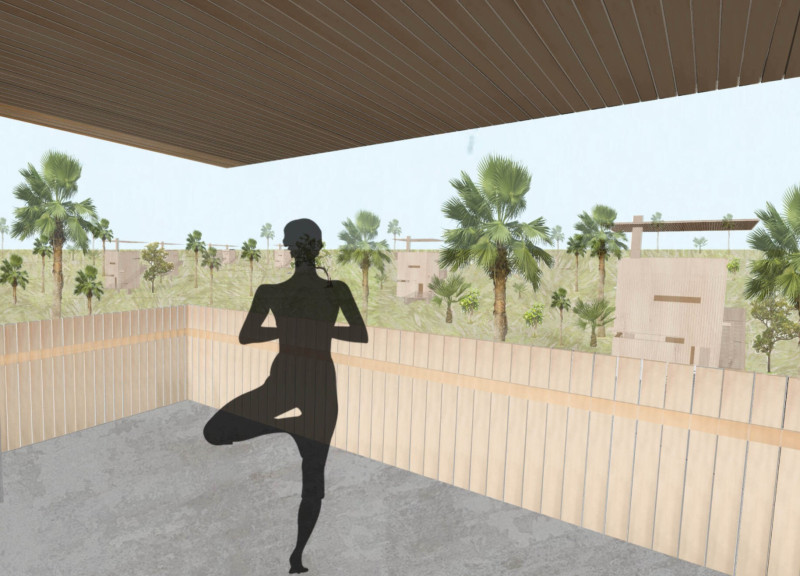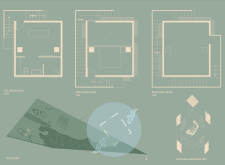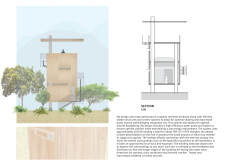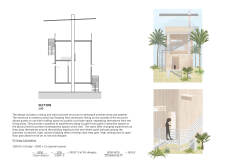5 key facts about this project
The design introduces a strong connection between the Cambodian culture and the practice of yoga. It is located in a region characterized by humidity and heat, highlighting the need for features that enhance comfort and usability. The main idea here is resilience, which serves as a guiding principle throughout the design. The structure supports activities that promote relaxation, reflection, and community interaction.
Shade Structure
A significant feature of the design is the shade structure, which plays a key role in maintaining thermal comfort. It captures cooling breezes from the Southwest during monsoon season and from the Northeast when it is dry. This adaptability is achieved through a lever and pulley system, allowing the shade panels to adjust according to the weather. By making these adjustments possible, the design caters to the comfort of all who use the space.
Thermal Comfort and User Control
Multiple apertures placed at different heights contribute to improved thermal comfort and give users control over their environment. These openings enable cross-ventilation, letting fresh air circulate freely. Occupants are encouraged to engage actively with their surroundings. The arrangement of spaces accommodates various activities, from lively gatherings to quiet moments of solitude. This thoughtful design promotes a healthy balance between community and personal time.
Material Choices
The architecture features rough macropcarpa cladding, which adds character to the structure while addressing practical needs. This material helps the building fit within its natural setting. Light-colored surfaces are used to reduce heat absorption from sunlight, enhancing the comfort level inside. These material choices not only support aesthetic goals but also contribute to efficiency in the warm, humid climate.
The design incorporates sustainable principles by considering its orientation relative to seasonal winds. High-performance windows and effective shading elements are used to maximize natural light while keeping the heat outside. A compact form aids in energy efficiency, creating a space that emphasizes resilience and user experience, inviting a direct connection with the natural environment.






















































